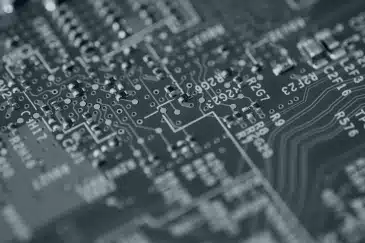Firmware development services for embedded systems
We provide comprehensive firmware development services, encompassing the creation of low-level firmware, the modification and debugging of existing code to enhance performance, and the development of firmware for SoC devices.
Discover our expertise in custom firmware development services tailored to your embedded systems.
Our firmware development services to support your low-level software projects

Architecture design

Firmware consulting

Cloud integration

Over-the-air (OTA) updates

Head of Product R&D

For a small UK medical device company, the ability to contract out development work is extremely important, and finding a trustable, reliable partner like Witekio has been priceless.

Our tech stack to build rock-solid foundations on top of your MCU
AMQP, CAN, Custom Data Exchange Protocols, HTTP/HTTPS, Modbus, MQTT/MQTT-SN, REST, SOAP, SSL, WebSocket

SUCCESS STORY
Embedded firmware development for Adeunis smart building sensors
- Dual MCU compatibility for reduced energy usage
- A network tree mechanism to extend update reach
- Enhanced security to protect against cyber threats
- An intuitive web application for straightforward update management
Start enhancing your firmware development process
Looking to outsource embedded firmware development or need help to create IoT firmware? Get in touch.
Transforming your device vision into reality
4 Countries
4 countries
ISO 27001 certified
ISO 27001 certified
fortune 500 owned
fortune 500 owned
FAQ: about firmware development services
What are firmware development services?
Firmware development services include designing, coding, debugging, and maintaining low-level software that controls hardware devices. This can range from bare metal development to working with an operating system on an embedded device.
Why work with a custom firmware development company?
Partnering with a firmware development company gives you access to deep technical know-how in embedded firmware development — including edge computing, power optimization, and protocol stack integration. It’s the most effective method to speed up market entry while minimizing technical debt.
What industries need embedded firmware development?
Industries like IoT, medical devices, consumer electronics, and industrial automation rely heavily on embedded firmware development solutions.
How does the firmware development process work?
A robust firmware development process includes:
- Requirement gathering and hardware analysis
- Custom firmware architecture design
- Development (bare-metal or RTOS-based)
- Hardware-software integration
- Testing and debugging
- Deployment and support (e.g., OTA updates)
What’s the difference between embedded firmware and embedded software?
Embedded firmware controls hardware components at a lower level, while embedded software can include high-level functions and applications running on the device.
Can you develop firmware for IoT devices?
We’re experts in firmware development for embedded systems and connected devices. From secure cloud integration to low-energy wireless protocols (BLE, NB-IoT, LoRaWAN), we ensure your device communicates reliably — and securely.


